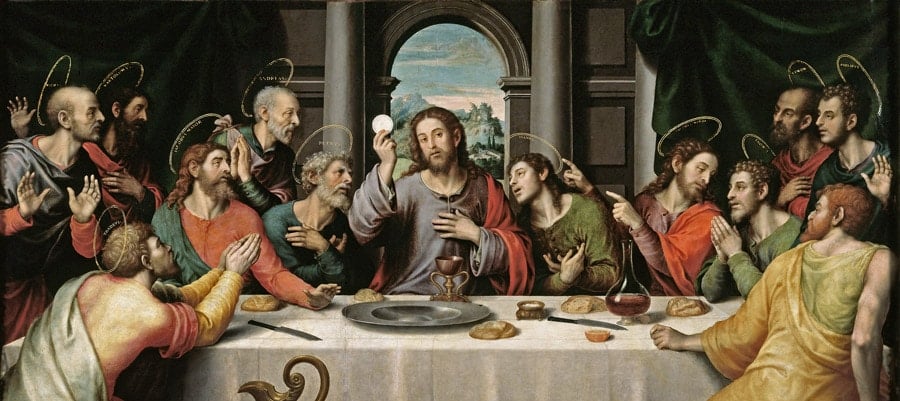
There is no doubt in my mind that this is the best of the six discernment papers. In terms of what is found in the paper, in the first four out of the six sections there is little to criticise. The working group is to be commended on the systematic clarity of the paper, its judicious use of key quotations from magisterial documents, and especially what I would call its “biblical theology”.
The Executive Summary (Introduction) clearly sets out that a Christ-centred Church that is Prayerful and Eucharistic must be a community wherein the members participate in Christ, are formed by the Gospel, and are on mission in the world. It asserts the personal and communal nature of prayer, and envisions a broad approach to the meaning of “Eucharist” (thanksgiving).
There is no doubt in my mind that this is the best of the six discernment papers
Looking at “participation” in the first Reflection on Listening and Dialogue Responses, it stresses that this means a conscious, devout, and collaborative participation (Sacrosanctum Concilium 48). In discussing the contentious issue of the English translation of the Missal, it refers to Paul VI’s plea for both clarity and dignity. Regarding “formation,” it stresses the need for encountering Jesus through the Scriptures as well as worship, and mentions the desire of many for good preaching and beautiful liturgical music.

Concerning “mission,” it reminds us that the ultimate Eucharistic goal is missa est – moved by grace we are dismissed, sent out, to “nourish, accompany, give witness, support, invite, welcome, engage and be present to others, such that we all grow in holiness”. One point that could have been developed here is that participation in mission itself leads to growth in our community relationships, that is, it enables a more intimate relationship as brothers and sisters in Christ. Another point is the need to evangelise not only those who do not participate in the Eucharistic assembly, but also many of those who do, as they are not yet “intentional disciples” (See Sherry Weddell, Forming Intentional Disciples).
Section two on Pastoral Reality gives some clear snapshots of the situation in parishes, families, Catholic schools, liturgical diversity, devotional life, spiritual catechesis and direction, and catechesis about Sacred Scripture, although in some of them a little “soft focus” has also been used. Insightfully, it points out that “people tend to seek out their preferred style of liturgy,” and I was especially pleased to see a mention of the situation with regard to the Divine Office, spiritual reading, Lectio Divina, and Eucharistic adoration in the current devotional life of Catholics.
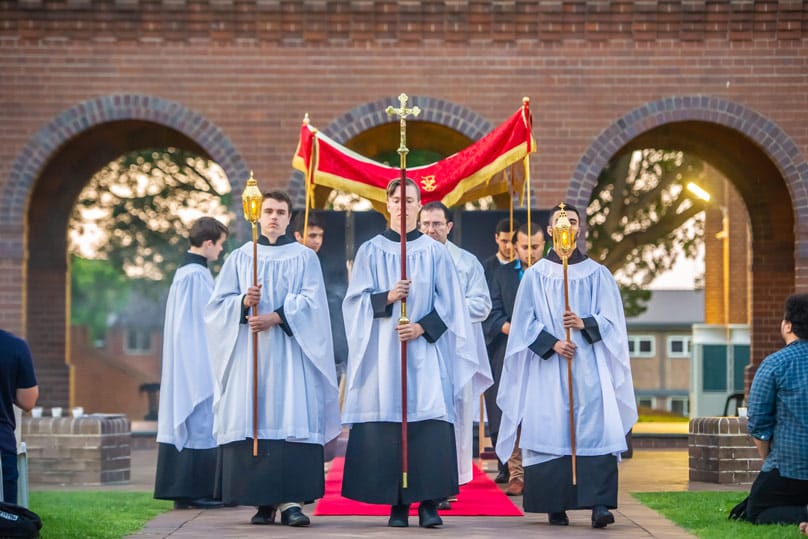
For me, the highlight of the paper was section three on Theological Vision. To use the story of the encounter of two disciples with the Risen Lord on the road to Emmaus was an inspired choice. The Eucharistic meaning of this encounter is thoroughly laid out in this section. The fact that the beginning of the story begins with disillusionment and despondency speaks directly to a widespread experience in the contemporary Church. The paper rightly states that the transformation of the hearts of the disciples begins with a kind of “liturgy or the Word,” when Jesus “opens the Scriptures” for them. It is Jesus in his Word who is the ultimate “formator”. The use in the story of the four “Eucharistic” verbs – took, blessed, broke, and gave – emphasise that, if our hearts are prepared by his Word, we can recognise Jesus as truly present with us in the Breaking of the Bread. The immediate response of the disciples to share what they have experienced with others points to the missionary zeal that should flow from this encounter with the Lord.
This section also raises the issue of the nature of what Pope Francis calls the “art of accompaniment”. This term has a fortuitous relationship to the Eucharist, since it is derived from the Latin for “sharing bread”. Speaking for myself, I still have much to learn about this art, but the Emmaus story is especially helpful here, since Jesus begins his conversation with his disciples by asking questions and listening to answers. This is the starting point for all evangelisation and companionship.
in prayer and the Eucharist, we encounter Jesus in our hearts
One thing that could be overlooked in this section is a little point about how, in prayer and the Eucharist, we encounter Jesus in our hearts. This could be dismissed as a lapse into sentimental piety. However, to appreciate its full significance, one must go to those sections of the Catechism of the Catholic Church that are referred to. We owe these sections especially to one or the architects of the Catechism, Joseph Ratzinger, who there drew on the profound understanding of the human heart found in Sacred Scripture.
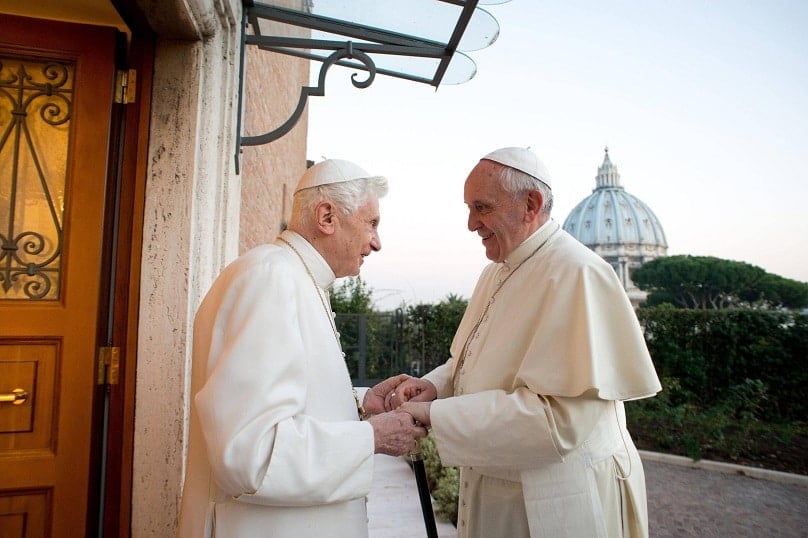
Finally, this section gives an excellent summary of essence of fruitful prayer. “Seeking help from the Holy Spirit, prayer can lead us to gratitude for God’s gifts in daily life. We may ask for grace and so request ‘good things from God’. ‘We do not know how to pray as we ought’ (Romans 8:26), yet we may experience for ourselves the gift of prayer which is an encounter with God. We can dispose ourselves to meet Jesus each day, and thus experience being drawn into the life of the Trinity.”
It is in the fourth section on Major Challenges that things begin to go a little awry. On the whole, this section gives a good account of some of the major challenges, addressing them according to classification given in the Executive Summary and first section – Community, Participation, Formation, and Mission.
For Community, the challenges are identified as incorporation of the Gospel into daily life, relating communally outside the Eucharist, the loss of community through parish amalgamations, lack of familiarity with communal discernment, and how the Church can become a real “field hospital”.
It is in its remarks on the nature of this “field hospital” that the first serious misdiagnosis appears in the paper. We are told that this image of Pope Francis “offers a challenge for us to become a community which offers people space to rest, heal and recover their vitality”. It then tells us that many submissions to the Plenary Council proposed the reintroduction of the third rite of the Sacrament of Penance as a way to “meet the needs of God’s people for forgiveness and healing”.
The crucial issue here is the absence of any mention of repentance
The crucial issue here is the absence of any mention of repentance. This may seem a minor point. Does not the mention of forgiveness imply it? Yet, the general tenor of the presentation of the nature of the “field hospital” really does not address this point clearly. The Gospel according to Mark gives a succinct summary of the preaching of Jesus with the statement, “The time is fulfilled, and the kingdom of God is close at hand; repent and believe in the gospel”. Repentance (turning from sin), and conversion (turning to God), is the salt that is missing here. Like the paralytic lowered down through the roof, the great disease of which all of us need to be healed is sin. We paralytics need something a lot more than a sacramental celebration designed, in extremis, for those on a sinking ship, or just about to “go over the top”. We need a lot more than a rite that would enable us to avoid the direct and immediate cauterisation of this potentially fatal wound. We must encounter Jesus as we lie on our mats, and hear the healing and liberating words, “Child, your sins are forgiven” (Mk 2:5).
For Participation, the challenges presented are the neglect of most Australian Catholics to meet together in the Sunday Eucharist, the difficulty of maintaining liturgical ministries, disputes about who should carry out these ministries, and contention about the translations of liturgical texts.
For Formation, the challenges suggested are knowing how to encounter God in person prayer and communal worship, administering the sacraments fruitfully, the training of liturgical ministers, and catechesis about discernment.
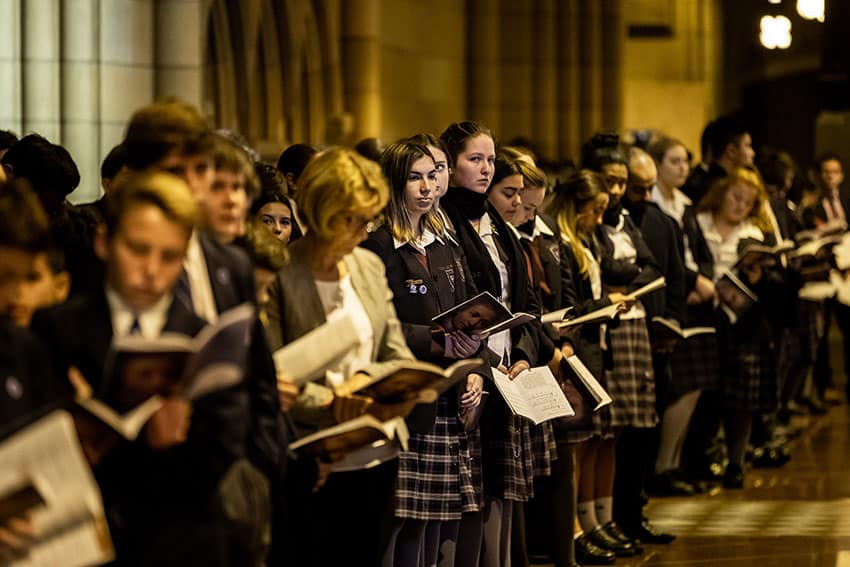
For Mission, the essential challenge is how to translate our Eucharistic worship into missionary engagement. The emphasis on sharing with those in need, the “royal” mission, was good, since without participation as “sharing” we cannot have full participation as “communion/fellowship”. However, there was no concomitant reference to the “prophetic” mission of bringing the Gospel to all.
Finally, after the satisfaction derived from reading the first five sections, the last section on Prioritised Questions and Proposals for Change came as something of a disappointment. There are some good suggestions in this section. One is the promotion of more intimate small communities that focus on praying with Scripture. Another is the encouragement of communal discernment. St. Ignatius could be very helpful here, his three basic steps being: “1) prayer for light from the Holy Spirit; 2) gathering all the possible evidence for judgement; 3) the continuing effort to find confirmation during each step of the discernment process as well as for the final judgement” (Eugene Duffy, “Processes for Communal Discernment: Diocesan Synods and Assemblies” The Jurist). Also helpful on this point could be the formation of priests as the “discerners of charisms” in their parishes. Another helpful proposal is to do something which, in essence, is very simple – teach people how to pray. I came out of 13 years of Catholic schooling knowing how to say prayers, but not how to pray. We should first focus on the basics – vocal and mental prayer. Apart from this, I agree with Pope Benedict XVI that a widespread practice of Lectio Divina would bring about “a new spiritual springtime” (Address in the 40th Anniversary of Dei Verbum).
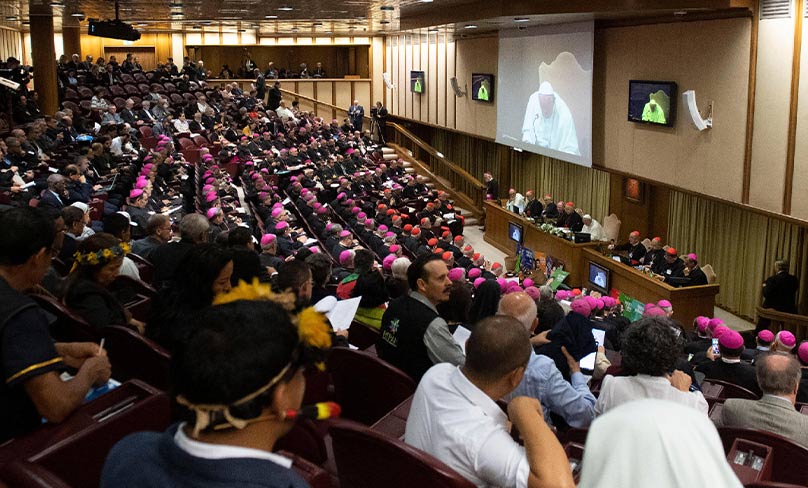
Unfortunately, too many of the proposals focus on what I would call structural or organizational change – more councils, more committees, more teams, changes to the missal and to language, etc. This is not to say that none of these proposals have any merit. Yet the real key to a renewal of prayer and liturgical worship in the Church must be “grassroots”. Those of us who know how to pray, however imperfectly, whether we be pastors or laypeople, must share our experience of prayer with those who do not.
Peter McGregor is a lecturer in theology at the Catholic Institute of Sydney.
Related Stories:
